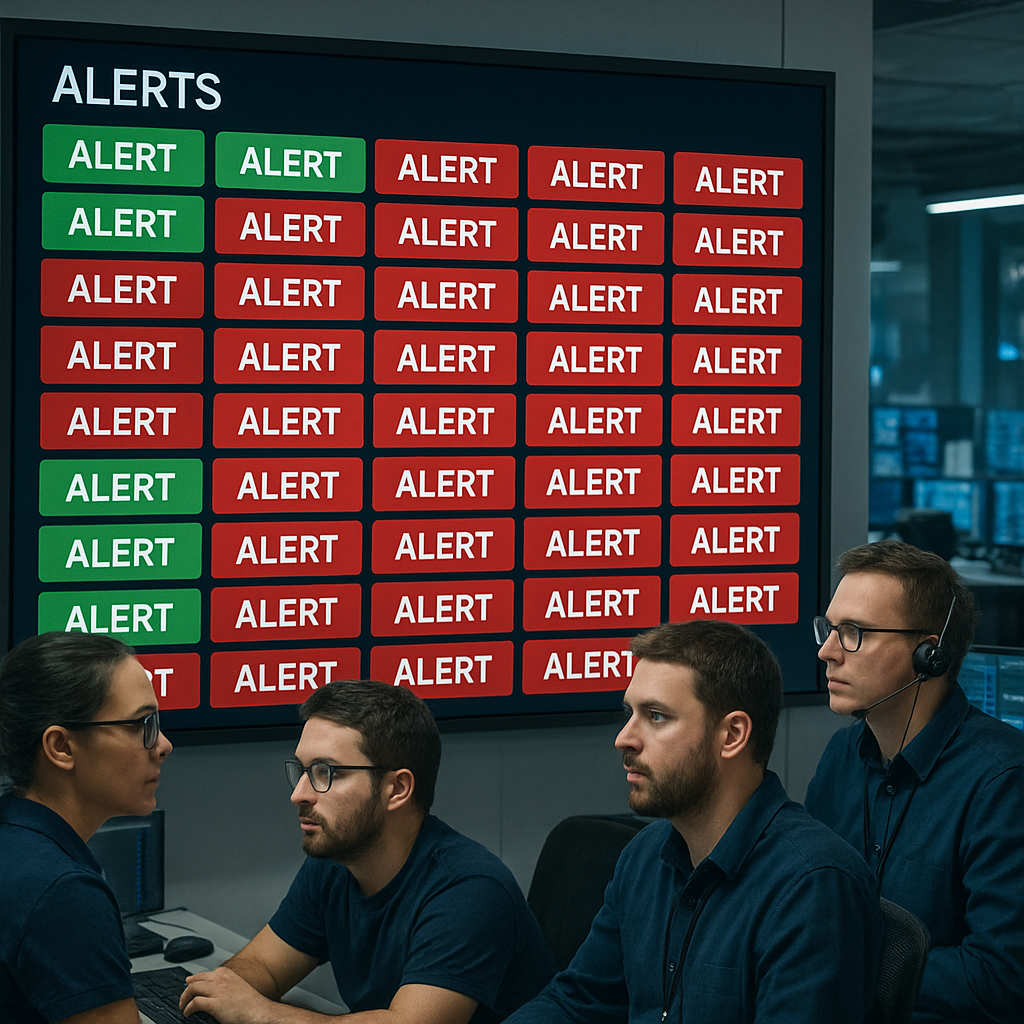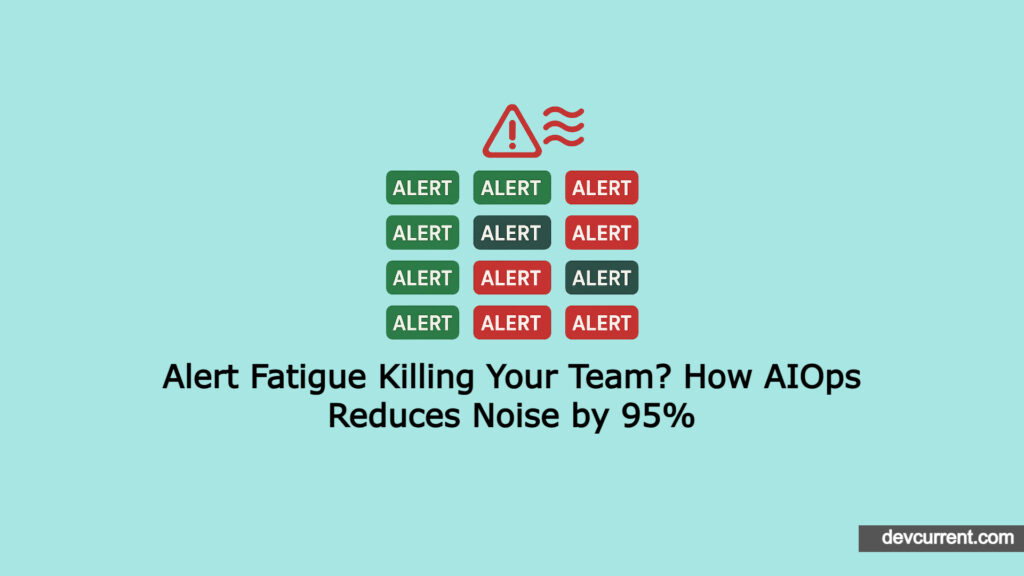In today’s fast-paced digital world, alert fatigue can be the silent killer of team productivity, morale, and system reliability. As IT environments grow increasingly complex—spanning hybrid clouds, microservices, and a plethora of monitoring tools—so too does the deluge of alerts. When teams drown in thousands of daily notifications, critical issues slip through the cracks, mean time to resolution (MTTR) soars, and burnout sets in. Artificial Intelligence for IT Operations (AIOps) emerges as the powerhouse solution, slashing noise by up to 95% and transforming reactive firefighting into proactive, autonomous operations.
The Alert Fatigue Epidemic
Modern IT environments generate millions of events daily, overwhelming teams and dulling responsiveness. Common symptoms:
- Ignored alerts: Organizations ignore roughly 27% of alerts, risking undetected incidents.
- Engineer burnout: Repeated false positives erode morale and drive attrition.
- Extended outages: Slow detection and resolution cost an average of $5,600 per minute of downtime.
In healthcare, up to 99% of alarms prove irrelevant, placing patient safety at risk. SecOps analysts spend 30% of time on false positives.

Traditional Monitoring: Why It Breaks Down
- Tool sprawl: Dozens of specialized solutions generate redundant alerts, creating “alert storms”.
- Static thresholds: One-size-fits-all rules can’t adapt to dynamic cloud and microservices architectures.
- Siloed contexts: Disconnected tools lack end-to-end service topology, slowing root-cause analysis.
Such limitations force manual tuning—yet as environments evolve, thresholds rapidly become obsolete, perpetuating noise.
AIOps Unpacked: Core Capabilities
AIOps platforms harness AI/ML and big-data analytics to automate and intelligentize event management:
- Noise suppression: Deduplicate and suppress duplicate or low-priority alerts.
- Event correlation: Cluster related signals into cohesive incidents.
- Anomaly detection: Learn normal behavior to surface true abnormalities.
- Contextual enrichment: Auto-attach service maps, ownership, and runbook links.
- Automated remediation: Trigger self-healing actions or workflows via runbook automation.
These capabilities converge to deliver 95% noise reduction, turning thousands of raw events into a manageable incident queue.
Proven Outcomes: 95% Noise Reduction and Beyond
generated_image:35
Figure: Before and after AIOps noise reduction transforms an overwhelmed dashboard into actionable insights.
Carousel Industries Case Study
- 200,000 raw events/month reduced to 10,000 actionable incidents.
- 95% reduction in alert volume, 20% cut in OPEX, 30% uplift in NPS.
Tietoevry Managed Services
- Achieved >95% noise suppression across hybrid cloud workloads.
- 50% faster mean time to detection (MTTD) and resolution (MTTR).
- Automated 50% of routine ITOps tasks.
Forrester Study: ScienceLogic SL1
- 157% ROI over three years, payback within six months.
- 20,100 hours of labor savings, $5.84 M total benefits.
Expanding the Impact: Key AIOps Use Cases
Calculating ROI: Tangible Business Benefits
AIOps investments yield measurable ROI across multiple dimensions:
ROI realization requires baseline metrics pre- and post-implementation, tying technical gains directly to financial and customer KPIs.
Overcoming Adoption Challenges
Key hurdles and mitigation strategies:
- Data Silos & Quality: Consolidate telemetry and enforce governance to feed reliable AI models.
- Integration Complexity: Prioritize high-volume sources; leverage prebuilt connectors (ServiceNow, Splunk, etc.).
- Skills Gap: Provide targeted training and designate AIOps champions to drive adoption.
- Resistance to Change: Start with pilot projects demonstrating quick wins; communicate value to stakeholders.
- False Positives: Continuously refine ML thresholds; use feedback loops to calibrate alert accuracy.
Future Trends in AIOps
- Proactive to Autonomous: Shift from predicting incidents to fully autonomous remediation and self-healing operations.
- Edge & IoT Integration: Real-time anomaly detection and automation at the network edge.
- Generative AI Assistants: Conversational interfaces guiding incident resolution steps.
- Unified Data Fabric: Breaking silos with centralized, governed observability platforms.
- Sustainability Focus: AI-driven optimization of resource usage and carbon footprint reduction.
By 2025, Gartner predicts 70% of large enterprises will rely on AIOps platforms, cementing its role as the core of modern IT management.
ALSO READ – AIOps: Revolutionizing Incident Management and Observability in the Age of Complexity
Implementation Blueprint
- Assessment & Baseline
- Audit existing alerts, tools, and KPIs. Measure current alert volumes, MTTR, and costs.
- Platform Selection
- Evaluate AIOps solutions based on scalability, integration ecosystem, and ML capabilities.
- Data Ingestion & Hygiene
- Onboard high-volume sources first; standardize naming, labels, and schemas.
- Model Training & Tuning
- Leverage historical event data to train correlation and anomaly algorithms.
- Automation Playbooks
- Define runbook steps and workflows for frequent incidents to enable self-healing.
- Iterative Refinement
- Monitor noise metrics, analyze false positives, refine correlation rules monthly.
- Governance & Collaboration
- Establish cross-functional AIOps steering committee across DevOps, SRE, and SecOps.
- KPI Tracking & Reporting
- Continuously report alert volume, MTTR, cost savings, and customer satisfaction improvements.
Visualizing the Transformation
Before AIOps:
- Thousands of unprioritized alerts
- Manual toil per incident
- High operational costs and burnout
After AIOps:
- 95% fewer notifications
- Automated clustering and remediation
- Dramatic ROI, faster MTTR, and uplifted team morale
Embrace AIOps now to end alert fatigue, empower your teams, and transform IT operations into a strategic, automated, and value-driving engine.resolve incidents faster, and shift from reactive firefighting to proactive, autonomous operations. The result? A 95% reduction in noise, improved reliability, and empowered teams focused on strategic innovation rather than endless signal triage. Embrace AIOps today and let your operations thrive.
References
False alarm rates in clinical environments
SOC analyst time lost chasing false positives
Tool fragmentation leads to redundant alerts
Carousel Industries case study: 95% noise reduction
Tietoevry case study: >95% alert noise reduction

